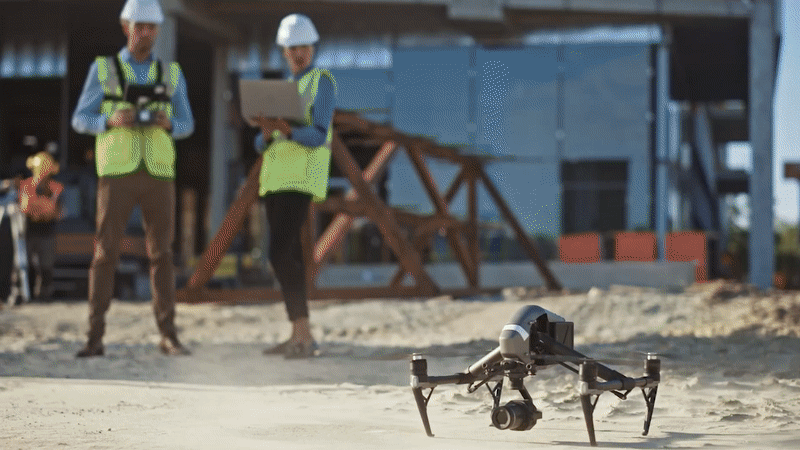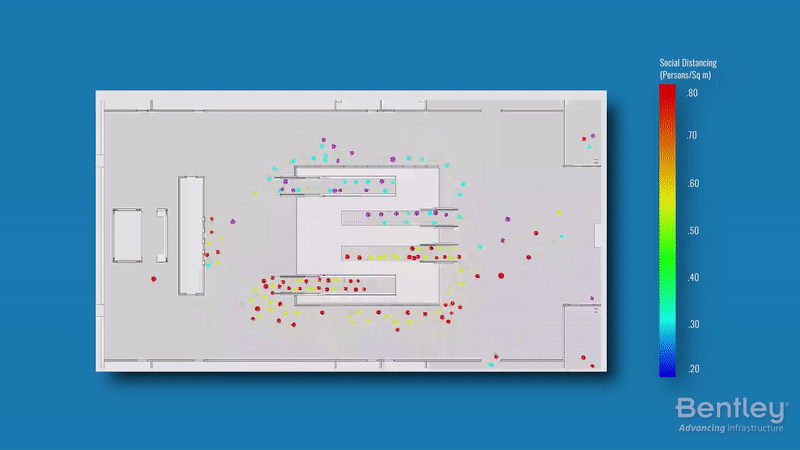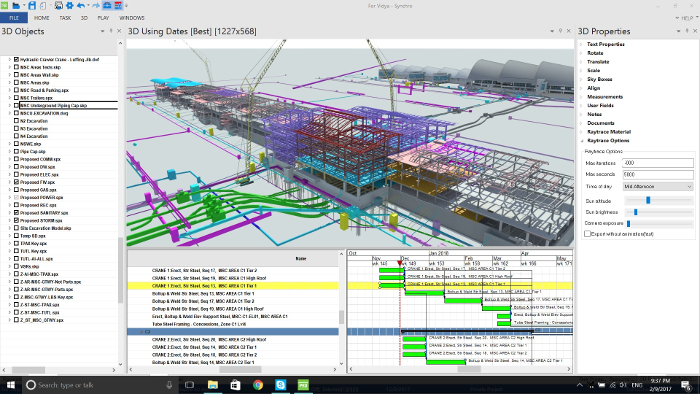ដំណើរឆ្ពោះទៅបច្ចេកវិទ្យាឌីជីថល ដើម្បីភាពធន់នៃហេដ្ឋារចនាសម្ព័ន្ធ!
ឱកាសនេះ គឺជាពេលវេលាដ៍ល្អក្នុងការចាប់ផ្តើមរៀបចំឱ្យមានប្រព័ន្ធឌីជីថល មិនត្រឹមតែនៅក្នុងអង្គភាពរបស់យើងប៉ុណ្ណោះទេ ប៉ុន្តែថែមទាំងឆ្ពោះទៅរក “ព័ស្តុតាងនាពេលអនាគត” ដែល ធនធានរបស់ពិភពលោកយើង វានឹងអាស្រ័យគ្នាទៅវិញទៅមក រវាងសេដ្ឋកិច្ច និងបរិស្ថាន! យើងបានទន្ទឹងរង់ចាំដើមឆ្នាំ 2022 ដោយបានស៊ូទ្រាំនឹងជំងឺ រាតត្បាតសកល និងបានអូសបន្លាយដោយមិនបានរំពឹងទុក យើងគួរតែផ្តល់អាទិភាពដល់ការសិក្សាភាគច្រើនបំផុត ដើម្បីឆ្លើយតបទៅនឹងភាពងាយរងគ្រោះ ដែលយើងមិនបានត្រៀមទុកជាមុន។ ខ្ញុំអាចនិយាយបានថា ជាការគិត “ឆ្ពោះទៅឌីជីថល” ដែល យើងបានគិត និងរៀបចំដើម្បីបង្កើនផលិតភាពសេដ្ឋកិច្ចឱ្យកាន់តែទូលំទូលាយ និងទទួលបានសន្ទុះថ្មី នៅពេលដែលគ្មាននរណាម្នាក់ នៅលើលោកយើងនេះអាចទៅបន្តធ្វើការអស់មួយជីវិត ពីឆ្នាំទៅមួយ ឆ្នាំមិនចេះហត់នឿយបានទេ។ខ្ញុំគិតថាសន្ទុះក្នុងការឈានទៅរកបច្ចេកវិទ្យាឌីជីថល វានឹងប្រែក្លាយវិបត្តិដែលយើងកំពុងជួបប្រទះ ដើម្បីស្វែងរកដំណោះស្រាយ ហើយត្រូវគិតថា ជាការគិតគូរមួយឆ្ពោះទៅរកការពង្រឹងគុណភាពនៃហេដ្ឋារចនាសម្ព័ន្ធ។ ឥឡូវនេះយើងមានឱកាសចងក្រងដំណើរឆ្ពោះទៅរកបច្ចេកវិទ្យាឌីជីថល មិនមែនសម្រាប់តែក្នុងអង្គភាពរបស់យើងប៉ុណ្ណោះទេ ប៉ុន្តែជាទិសដៅឆ្ពោះទៅរក “ព័ស្តុតាងអនាគត” ដែលធនធានពិភពលោកយើង វានឹងអាស្រ័យគ្នាទៅវិញទៅមក រវាង តុល្យភាពសេដ្ឋកិច្ច និងបរិស្ថាន។
ដោយយោងភាពចាំបាច់ក្នុងអំឡុងពេលជំងឺរាតត្បាត ដំណើរឆ្ពោះទៅរកបច្ចេកវិទ្យាឌីជីថល “Going Digital” របស់យើងបានបើកដំណើរការ “និម្មិត” ឬ Virtualizing នៃវិស្វកម្មហេដ្ឋារចនាសម្ព័ន្ធ និងជំនាញវិជ្ជាជីវៈពាក់ព័ន្ធ។ សព្វថ្ងៃនេះ អ្នកប្រើប្រាស់បច្ចេកវិទ្យានេះ មិនថាយើងនៅទីណាទេ គឺយើងអាចប្រើប្រាស់វាបានគ្រប់ទីកន្លែងគ្រប់កិច្ចការ ជាមួយមនុស្សគ្រប់គ្នា។ នេះហើយជាការបង្កើនឱកាសជាទូទៅមួយសម្រាប់ទាំងអស់គ្នា ដែលធ្វើឱ្យយើងមានលទ្ធភាព
ការបង្កើនល្បឿនឌីជីថល
នៅក្នុងស្ថាប័នវិស្វកម្មហេដ្ឋារចនាសម្ព័ន្ធភាគច្រើន បានយកឈ្នះលើបញ្ហាប្រឈមដែលមិននឹកស្មានដល់ ហើយវាពិតជាបានពង្រីកវិសាលភាព និងប្រាក់ចំណេញរបស់ពួកគេក្នុងអំឡុងពេលមានជំងឺរាតត្បាត។
តាមរយៈការប្រើប្រាស់ឌីជីថល ពួកគេបានបង្ហាញឱ្យឃើញ និងធ្វើឱ្យប្រសើរឡើងនូវភាពធន់របស់ពួកគេ ហើយជាលទ្ធផលបន្ថែម បានបង្ហាញឱ្យឃើងឃើញពី “ព័ស្តុតាងនាពេលអនាគត”។ ដូចនេះ អាទិភាពត្រូវតែបន្ត និងបង្កើនល្បឿនក្នុង ដំណើរឆ្ពោះទៅរកឌីជីថល ដូច្នេះវាមិនអាចទៅរួចទេ នៅពេលដែលយើងព្យាយាមបង្កើនកម្លាំង ពលកម្មវិស្វកម្មហេដ្ឋារចនាសម្ព័ន្ធ ដែលគិតថាចំនួនវិស្វករច្រើន នឹងអាចបង្កើនសន្ទុះការងាររបស់ពួកគេបាន។ ដូច្នេះ ដើម្បីបំពេញតម្រូវការពិភពលោកដែលកំពុងមានកំណើន គឺយើងត្រូវតែប្តេជ្ញាចិត្តបង្កើតប្រភពមូលនិធិថ្មី ក្នុងទិសដៅធ្វើឱ្យប្រសើរឡើងនូវគម្រោងហេដ្ឋារចនាសម្ព័ន្ធ។
ជាបទពិសោធន៍គំរូការងារ និងជីវិតដែលបង្កឡើងដោយជំងឺរាតត្បាតថ្មី បានរំខានយ៉ាងខ្លាំងដល់តម្រូវការសម្រាប់ភាពរឹងមាំនៃហេដ្ឋារចនាសម្ព័ន្ធ ដែលជាគោលបំណងដ៏មុតស្រួចរបស់យើង។ ការ ទប់ទល់ជាមួយវត្តមានដែលមិនរំពឹងទុកដូចជាបញ្ហាជំងឺរាតត្បាតនេះយើងបានបង្កើនការប្តេជ្ញាចិត្តជាសាកលក្នុងការសម្រេចបាន និងបន្តនិរន្តរភាពនៃការសម្របខ្លួនសម្រាប់ភាពធន់នៃតុល្យភាពរវាងសេដ្ឋកិច្ច និងបរិស្ថានទាំងមូល។ ការបង្កើតការចំណាយលើសលុបសម្រាប់ហេដ្ឋារចនាសម្ព័ន្ធថ្មីដើម្បីបង្កើនសមត្ថភាពប្រើប្រាស់ មានន័យថា វាអាចមានប្រសិទ្ធភាពត្រឹមកម្រិតណាមួយប៉ុណ្ណោះ ហេតុដូច្នេះហើយអាទិភាពត្រូវតែជាផ្នែកបន្ថែមចាំបាច់នៃអាយុកាលប្រើប្រាស់យូរអង្វែងទៅលើសំណង់ហេដ្ឋារចនាសម្ព័ន្ធ ដោយយើងបានគិតគូរស្វែងរកថាមពលកកើតឡើងវិញជំនួសឱ្យការប្រើប្រាស់ឥន្ធនៈហ្វូស៊ីល និងការគំរាមកំហែងអាកាសធាតុ។ ឥឡូវនេះ ដល់ពេលដើម្បីឆ្លើយតបនឹងបញ្ហាប្រឈមទាំងនេះហើយ អត្ថប្រយោជន៍ទៅថ្ងៃអនាគតនៃដំណើរឈានទៅរកឌីជីថល គឺបានមកដល់ហើយ និងកំពុងបង្កើនល្បឿន ជាមួយពាក្យថា ការសម្របខ្លួនជាមួយភាពជឿនលឿនរបស់ហេដ្ឋារចនាសម្ព័ន្ធឌីជីថលថ្វីន ឬ ហេដ្ឋារចនាសម្ព័ន្ធឌីជីថលភ្លោះ (Infrastructure Digital Twin)។
សន្និសីទ របស់ក្រុមហ៊ុន Bentley Systems Year In Infrastructure (BSY) ក្រោមប្រធានបទ ឆ្នាំនៃហេដ្ឋារចនាសម្ព័ន្ធ 2021 តាមរយៈកិច្ចប្រជុំនិមិ្មត បានបង្ហាញអំពីសន្ទុះនៃ ដំណើរឆ្ពោះទៅរកឌីជីថល។ ពានរង្វាន់ Going Digital Awards បានឆ្លុះបញ្ចាំងពីការវាយតម្លៃរបស់គណៈកម្មការវិនិច្ឆ័យឯករាជ្យ លើគម្រោងហេដ្ឋារចនាសម្ព័ន្ធរាប់រយដែលត្រូវបានជ្រើសរើសដោយអ្នកប្រើប្រាស់កម្មវិធី BSY នៅទូទាំងពិភពលោក។ សៀវភៅហេដ្ឋារចនាសម្ព័ន្ធឆ្នាំ 2021
ហេដ្ឋារចនាសម្ព័ន្ធឌីជីថលភ្លោះ (Infrastructure Digital Twins) គឺត្រូវរួមបញ្ចូលគ្នា ដែលផ្នែកនីមួយៗមានរក្សាទុកនៅក្នុងសេវាកម្ម Cloud ក្នុងនោះ យើងបានបែកចែកមុខងារបីធំៗ៖
បរិបទឌីជីថល (digital context) ប្រើប្រាស់សម្រាប់បញ្ជាក់ការ ពិត (ឆ្លុះបញ្ចាំង “OT – Operation Technologies” តាមរយៈប្រតិបត្តិការបច្ចេកវិទ្យា) សមាសធាតុឌីជីថល (digital components) ប្រើប្រាស់សម្រាប់ បញ្ជាក់ភាពត្រឹមត្រូវ (អានុភាព “ET – Engineering Technologies” ក្នុងបច្ចេកវិទ្យាវិស្វកម្ម) និង កាលប្បវត្តិឌីជីថល (digital chronology) ប្រើប្រាស់សម្រាប់ បញ្ជាក់ភាពស្មោះត្រង់ (តាមរយៈគុណតម្លៃ “IT – Information Technology” គឺជាការរួមបញ្ចូលនូវបច្ចេកវិទ្យាព័ត៌មានវិទ្យា)។ ដែលបច្ចេកវិទ្យាឌីជីថលទាំងបីខាងលើនេះ រួមបញ្ចូលគ្នាសម្រេចបាននូវច្រកទ្វារ ឌីជីថលភ្លោះ (Digital Twin) ដែលជាវឌ្ឍនភាព ដ៏សំខាន់ និងជោគជ័យមិនអាចកាត់ថ្លៃបានរបស់យើង ដែលបានស្វែងយល់ក្នុងអំឡុងពេលជំងឺរាតត្បាត។
High-resolution drone images are turned into a reality mesh linked to a digital twin for virtual bridge inspection. បរិបទឌីជីថល
36% នៃគម្រោងទាំង 57 ក្នុងឆ្នាំ 2021 របស់អ្នកប្រកួតយកពាន រង្វាន់ដំណើរឆ្ពោះទៅរកឌីជីថល (Going Digital Award) បានលើកយកគម្រោងសិក្សាគំរូពិត (reality modeling) មកប្រកួតប្រជែង ការស្ទាបស្ទង់មតិ Going Digital របស់ទីប្រឹក្សាផ្នែក AEC ទៅលើនាយកប្រតិបត្តិរបស់ក្រុមហ៊ុនទាំងអស់ដែលផ្តោតលើការងារស្ថាបត្យកម្ម-វិស្វកម្ម-សំណង់ (AEC – Architect, Engineering, and Construction) បានបង្ហាញថា ជាងពាក់កណ្តាលនៃពួកគេបាន បណ្តាក់ទុន និងកំពុងផ្តល់សេវាកម្មយន្តហោះគ្មានមនុស្សបើក (UAV– Unmanned Aerial Vehicle) ឬហៅថា ដ្រូន ដើម្បីចាប់យករូបភាពចេញពីគំរូពិត បំប្លែងជាឌីជីថលភ្លោះ ដោយមានការទទួលស្គាល់ពីក្រុមហ៊ុន Microsoft ក្រុមហ៊ុន Collins Engineering , Minnesota DoT និង BSY ត្រូវបានជ្រើសរើសជាដៃគូចម្រុះប្រចាំឆ្នាំ សម្រាប់ដំណើរការត្រួតពិនិត្យស្ពានដោយផ្អែកលើយន្តហោះគ្មានមនុស្សបើក UAV ដើម្បីចាប់យករូបភាពបំប្លែងជាឌីជីថលភ្លោះ ដោយសម្លឹងឃើញភាពចាំបាច់ចំពោះមុខ ក្រុមហ៊ុន BSY យើង បានទិញយកក្រុមហ៊ុន Seequent ដែលជាក្រុមហ៊ុនឈានមុខក្នុង ការថតយករូបភាពផ្ទៃលម្អិតនៃវត្ថុពិត បំប្លែងជា ឌីជីថលភ្លោះ (Sub-Surface Digital Twins) ដោយវាកាន់តែពិសិដ្ឋ នៅពេលយើងយក មករួមបញ្ចូលនូវវិទ្យាសាស្រ្តភូគព្ភសាស្រ្ត បូកនិងគំនិតវិស្វកម្មហេដ្ឋារចនាសម្ព័ន្ធ ជាមួយគ្នានេះ ដើម្បីធានានិរន្តរភាពបរិស្ថាន ក្រុមហ៊ុន BSY យើងក៏បានទិញយកក្រុមហ៊ុន Sensemetrics និងក្រុមហ៊ុន Vista Data Vision ដើម្បីបើកដំណើរការ Infrastructure IoT សម្រាប់ ការត្រួតពិនិត្យបរិស្ថាន សមាសធាតុឌីជីថល សមាសធាតុឌីជីថល គឺជាភាពប្រាកដប្រជា និងតម្លៃនៃហេដ្ឋា-រចនាសម្ព័ន្ធឌីជីថលភ្លោះ កើតឡើងពីការរួមបញ្ចូលគ្នានៃអត្ថន័ពិត ឬហៅថា (ឡូហ្សិច) ជាមួយនឹងភាពឆ្លាតវៃនៃបច្ចេកវិទ្យាវិស្វកម្មរបស់វត្ថុមួយ។ ដូចនេះ បានជាក្នុងអំឡុងពេលនៃជំងឺរាតត្បាត វាបានពន្លឿនតម្រូវការទាំងនេះ ដើម្បីឆ្លើយតបនឹងការឆ្នៃប្រឌិត ដោយយើងសូមលើកយកឧទាហរណ៍ជាក់ស្តែងដូចខាងក្រោម៖
ឧទាហរណ៍ទី១៖ ដោយកំណើននៃការប្រើប្រាស់ទិន្នន័យឌីជីថល និងការផ្តោតលើដំណើរការ 5G យ៉ាងទូលំទូលាយ ប្រតិបត្តិករនៃអង់តែនទូរគមនាគមន៍ភាគច្រើន បានប្តេជ្ញាបំពេញទិន្នន័យហេដ្ឋា-រចនាសម្ព័ន្ធ Digital Twins ដើម្បីភាពឈានមុខគេក្នុងបច្ចេកវិទ្យា និងសេវាកម្មរបស់ខ្លួន ដោយបានស្វែងរកកិច្ចសហការជាមួយក្រុមហ៊ុនជំនាញ រួមបញ្ចូលគ្នាបង្កើតឱ្យបាន “សមាសធាតុឌីជីថល” យ៉ាងរឹងមាំមួយ។ ដោយការផ្តិតយករូបភាពចេញពីគំរូពិត ដើម្បីវិភាគបង្កើតទៅជាឌីជីថលភ្លោះ ក្នុងសកម្មភាពមួយដែលគេហៅថា Curation (ជាដំណើរការជ្រើសរើស ប្រើប្រាស់ និងថែទាំដោយភាពហ្មត់ចត់) ដែលសកម្មភាពទាំងនេះ យើងបង្កើតបានសេវាកម្មមួយឈ្មោះថា OpenTower iQ Cloud ដែលយកមកប្រើសម្រាប់ជាលំហូរការងារនៃម៉ាស៊ីនសិក្សា (machine learning workflow) ដើម្បីធ្វើកាត់កត់សម្គាល់ និងចាត់ថ្នាក់ ដោយផ្អែកទៅលើ “កាតាឡុកឌីជីថល” ដែលយើងមាន ហើយបង្កើតជាសន្និធិទិន្នន័យសម្រាប់គំរូបង្គោលអង់តែននីមួយៗ។ ដូចនេះ សមាសធាតុឌីជីថលដែលបានសម្រាំងចេញពីរូបភាពពិត និងមុខងារនៃបង្គោលអង់តែននីមួយៗ បន្ទាប់មក ប្រមូលផ្តុំដើម្បីបង្កើតជាដ្យាក្រាម ចម្លងចេញជាប្រតិបត្តិការដូចគ្នាទៅនឹងគំរូពិត នឹងរក្សាទុកជាទិន្នន័យសម្រាប់ប្រតិបត្តិការថែទាំ និងគ្រប់គ្រងដោយប្រសិទ្ធិភាព។ ហើយយើងជឿជាក់ថា លទ្ធផលនៃការសិក្សាជាបន្តបន្ទាប់ពីមួយថ្ងៃទៅមួយថ្ងៃ បានធ្វើឱ្យករណីសិក្សាគំរូអង់តែនឌីជីថលភ្លោះ របស់យើងកាន់តែសុក្រឹតសម្រាប់ប្រតិបត្តិការគ្រប់គ្រង និងធានាភាពធនសម្រាប់ការប្រើប្រាស់។
ឧទាហរណ៍ទី២៖ តម្រូវការសម្រាប់ហេដ្ឋារចនាសម្ព័ន្ធត្រូវបានប្រើប្រាស់ខុសគ្នា ក្រោមលក្ខខណ្ឌជំងឺរាតត្បាត និងបានញ៉ាំងឱ្យមានកម្មវិធីថ្មីៗ និងភាពជឿនលឿនក្នុងការធ្វើគំរូ និងត្រាប់តាមគំរូឧបករណ៍ចល័ត Digital Twins ។ ជាឧទាហរណ៍ កម្មវិធីចម្លងគំរូបង្កើតផ្លូវ សម្រាប់ថ្មើរជើង របស់ក្រុមហ៊ុន LEGION ដែលគ្រប់គ្រងដោយ BSY ត្រូវបានអភិវឌ្ឍឱ្យប្រសើរឡើង ដើម្បីវិភាគឱ្យស៊ីជម្រៅពីគំរូនៃ ឥរិយាបថមនុស្សសម្រាប់រក្សាគម្លាតក្នុងកន្លែងសាធារណៈ ឬទីប្រជុំ ជន។ កម្មវិធីនេះ បានគណនាចរាចរណ៍រំហូរមនុស្សជារូបមន្ត CUBE, EMME និង DYNAMEQ ដើម្បីវិភាគលើសេណារីយ៉ូនៃការបង្ខាំង ឬ lockdown ភ្លាមៗ ក្នុងករណីអាសន្ន។ ហើយកម្មវិធី AGENT ថ្មីរបស់ BSY កំពុងពង្រីកវាជាមួយនឹងសមត្ថភាពផ្អែកលើភ្នាក់ងារអង្កេត។ ជាមួយនឹងកម្មវិធីវិនិយោគហេដ្ឋារចនាសម្ព័ន្ធដឹកជញ្ជូនសំខាន់ៗ ឥឡូវនេះវាស្ថិតនៅក្នុងក្របខណ្ឌដែលវិសាលភាពរបស់វាអាចគ្រប់គ្រងទីកន្លែងដែលមានរំហូរមនុស្សច្រើន និងតាមរយៈបទពិសោធន៍ទាញចេញពីជំងឺរាតត្បាត វាបានជួយដល់ការសម្រេចចិត្ត ក្នុងការចល័ត និងគ្រប់គ្រងអ្នកធ្វើដំណើរប្រកបដោយថាមពលដោយយើងបានអង្កេត និងគិតគូរយ៉ាងហ្មត់ចត់ពីភាពអាស្រ័យគ្នាទៅវិញទៅមក និងមុខងារពហុម៉ូឌុលនៃអ្នកដំណើរ (ក្នុងចំណោមសមាស- ធាតុឌីជីថល) បង្កើតជា “ភ្នាក់ងារ” គ្រប់គ្រងអ្នកដំណើរដោយឯករាជ្យ ជាជាងការពឹងផ្អែកតែលើវិធានការសរុបជាប្រពៃណី។
ឧទាហរណ៍ទី៣៖ ដោយសារគំនិតផ្តួចផ្តើមតាមរយៈគោលនយោបាយ “កសាងឡើងវិញឱ្យ កាន់តែប្រសើរឡើង” ឬ “Build Back Better” យើងបានកត់សម្គាល់ការផ្តល់អាទិភាពដល់ភាពធន់នឹងអាកាសធាតុតាមរយៈប្រភពថាមពលកកើតឡើងវិញ។ គំរូវិស្វកម្ម និងកម្មវិធីចម្លង (បំប្លែង) កំពុងត្រូវបានដាក់បញ្ចូលជាបន្សំថ្មីជុំវិញសមាសធាតុឌីជីថល។ ជាឧទាហរណ៍ កម្មវិធីរចនា OpenWind Power របស់ BSY បានរួមបញ្ចូលមុខងារភូមិគព្វសាស្ត្រនៃកម្មវិធី PLAXIS សម្រាប់គម្រោងកសិដ្ឋានកង្ហាខ្យល់នៅលំហរសមុទ្រ ហើយបានបង្កើតគំរូរលកសមុទ្រ ចេញពីកម្មវិធី SACS និង MOSES របស់យើងសម្រាប់ការដំឡើងកង្ហាខ្យល់នៅឆ្នេរសមុទ្រ ជាលក្ខណៈអណ្តែតផងដែរ និងកម្មវិធីវិស្វកម្មបញ្ជូនថាមពល Powerline Systems ដែលទើបទទួលបានថ្មីរបស់យើង នឹងត្រូវបានដាក់បញ្ចូលសម្រាប់ការរួមបញ្ចូលជាក្រឡាចត្រង្គ។ បើគ្មានកម្មវិធីទាំងនេះជួយ វានឹង ក្លាយជាឧបសគ្គរារាំងវឌ្ឍនភាពឆ្ពោះទៅរកថាមពលបៃតង។
Bentley’s LEGION generates objective simulations of pedestrian traffic flow which aided in predicting social distancing behaviors at a transportation hub. កាលប្បវត្តិឌីជីថល កាលប្បវត្តិឌីជីថល ជាន័យសម្រាយ គឺការចងក្រងប្រវត្តិឌីជីថល។សម្រាប់ Infrastructure Digital Twins ត្រូវតែធ្វើការរួមបញ្ចូល គ្នានូវរាល់សកម្មភាពផ្លាស់ប្តូរទាំងនៅក្នុងបរិបទឌីជីថល និងសមាសធាតុឌីជីថល ក្នុងគោលបំណងដើម្បីរក្សាបាននូវភាពជាក់លាក់លើវដ្តជីវិតនៃរបស់អ្វីមួយយកមកប្រើប្រាស់ ឬចាត់ទុកជាទ្រព្យសកម្ម ហើយអត្ថប្រយោជន៍របស់វាត្រូវបានគុណដោយការកត់ត្រា និងបូកបន្ថែមរូបមន្តចេញពីគំរូណាមួយ ដែលយើងពិបាកប៉ាន់ស្មានលើការ
ការដាក់កំហិតក្នុងការធ្វើដំណើរទៅកាន់ទីតាំងគម្រោង និងទៅជិតទីតាំងគម្រោង បានពន្លឿនកិច្ច “វិស្វកម្មសំណង់” តាមរយៈ ការលើកកម្ពស់ 3D BIM សម្រាប់ការរៀបចំលំដាប់លំដោយ និងការរៀបចំប្រតិទិនការងារសាងសង់។ ប៉ុន្តែ ការលេចចេញនូវឱកាសថ្មីសម្រាប់ “ឧស្សាតូបនីយ៍កម្ម” កិច្ចការសាងសង់ គឺត្រូវការជាចាំបាច់នូវគំរូបំប្លែង 4D ដែលជាគំរូចំណុចប្រទាក់ក្រឡា និងការផ្គុំម៉ូឌុលដែលយើងបង្កើតវាឡើងដើម្បីផលិតការងារ ដោយមិនចាំបាច់ធ្វើវា
បរិយាកាសមើលឃើញក្នុងរូបភាព 3D ថ្មី និងអាចចូលដំណើរ ការបានយ៉ាងទូលំទូលាយ (ត្រូវបានពន្លឿនដោយការវិនិយោគសម្រាប់អ្នកប្រើប្រាស់ ដើម្បីពួកគេឆាប់បានទទួលបទពិសោធន៍ថ្មីជាមួយ កម្មវិធី “metaverse”) នេះនឹងធ្វើឱ្យបច្ចេកវិទ្យាថ្មីចុងក្រោយកាន់តែរីកចម្រើនយ៉ាងឆាប់រហ័សសម្រាប់ការរុករកឌីជីថលភ្លោះ ដោយវាបាននាំទៅរកការកំណត់ថ្មីសម្រាប់ការរួមបញ្ចូលជាមួយវេទិកាក្នុងកម្មវិធី iTwin របស់ BSY ដើម្បីបើកដំណើរការហេដ្ឋារចនាសម្ព័ន្ធ 4D Digital Twins តែមួយគត់ ដូចដែលបានបង្ហាញនៅក្នុងការបង្ហាញដំណាក់កាលសំខាន់ៗរបស់ក្រុមហ៊ុន NVIDIA នៃបរិយាកាស Omniverse របស់ខ្លួន ដើម្បីស្រមៃមើលពីគំរូសំណង់ក្នុងកម្មវិធី SYNCHRO 4D ។
ឧទាហរណ៍ជាក់ស្តែងនៅទីនេះធ្វើឱ្យករណីដែលអ្វីដែលយើងបានរៀននាពេលថ្មីៗនេះ – ពីការឆ្ពោះទៅរកឌីជីថលសម្រាប់ភាពធន់នឹងជំងឺរាតត្បាត – នឹងបម្រើយើងឱ្យបានល្អក្នុងរយៈពេលវែងជាងនេះ តាមរយៈ Digital Twins ដែលជាកត្តាចាំបាច់សម្រាប់ទ្រទ្រង់ភាពធន់នៃគម្រោងហេដ្ឋារចនាសម្ព័ន្ធទៅថ្ងៃអនាគត៕
This report was first featured in Geospatial World .
- Video Advertisement -



 English
English









